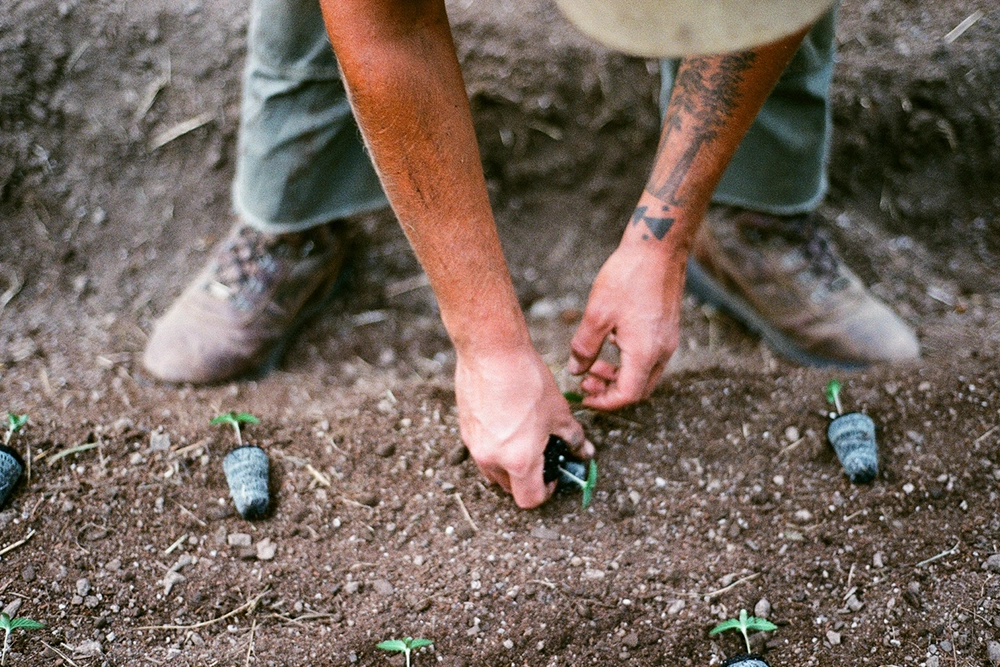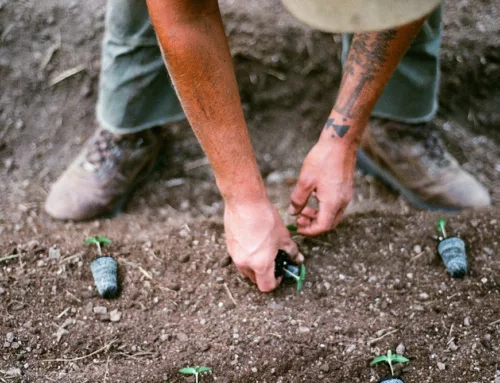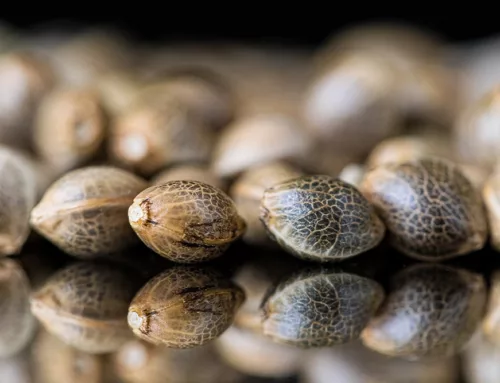How to Prune Cannabis for Happy and Hearty Plants
Pruning weed plants can enhance air circulation, improve light penetration, and encourage the development of larger buds. This article will explain the anatomy of the cannabis plant and offer practical techniques for pruning cannabis. It will cover the best practices for when and how to prune, providing in-depth insights for both novice and experienced growers.
Don’t just start cutting
Pruning involves removing withered leaves, unwanted shoots, or lower branches of the cannabis plant to manipulate auxin hormone levels in branches and flower tips, leading to an increased yield. However, pruning a plant without a clear understanding of its structure and growth patterns can have detrimental effects. So, don’t start cutting without proper knowledge!
Parts of a cannabis plant
Learning about the cannabis plant’s anatomy is essential for beginner growers. Understanding how each part functions and impacts plant growth allows growers to choose which parts to prune and which can be left to flourish naturally. To guide you on your journey, here’s an overview of the fundamental components of a cannabis plant:
Root
The roots absorb water and nutrients from the soil while anchoring the plant to the ground.
Stem
The stem provides structural support, transports water and nutrients, and becomes sturdier as the plant matures.
Nodes
Nodes are the points on a plant’s stem from which the branches grow. They are essential for the plant’s structure, and as the plants grow, more nodes develop.
Fan leaves
The fan leaves, which are large green leaves found on the cannabis plant, play a crucial role in photosynthesis and in storing food in the form of glucose.
Sugar leaves
Sugar leaves, smaller and narrower than fan leaves, grow from cannabis flowers and are involved in photosynthesis and sugar production for the plant.
Calyx
The calyxes are located between the stem and branches. They first appear as pre-flowers and are the protective leafy structures that encase the bud.
Bracts
Bracts are small, teardrop-shaped structures located at the base of the flower; their function is to protect the developing buds and provide support as they mature. The calyx and the bract form the cola, which is the flower of the cannabis plant
Cola
The cola is the largest and heaviest flower of the plant and forms at the top of the apical main stem. It often comprises a cluster of several flower formations grouped together.
Stigma
The hair-like structures at the tip of bracts are called stigmas. They are the pollen receptors and start the fertilization process when pollen lands on them, forming seeds. The stigma, style, and ovary form inside of the calyx.
Pistils
The pistil is the portion of the style that protrudes from the calyx. They eventually turn into the long, hair-like strands that extend from the buds. During the plant’s flowering stage, these pistils start out white and slowly turn orange, brown, or red as the plant matures.
Trichome
Trichomes are tiny, crystal-like structures found on the surface of cannabis flowers and buds. They contain the highest concentration of cannabinoids in the plant.
Flowers
Cannabis buds, also known as flowers, consist of multiple calyxes and are the consumable part of the female marijuana plant.
Stipules
Stipules are small, leaf-like structures found at the base of a leaf.
Fan leaves vs. sugar leaves
When it’s time for pruning, the main goal is to eliminate the big fan leaves that are either wilting and sapping energy from the plant or obstructing light from reaching the lower canopy. But how can we visually distinguish between them and sugar leaves, and what are their functions?
Fan leaves
Fan leaves typically have five to nine long, slender leaflets with serrated edges. They are attached to the lateral branches and can be light to dark green in color. These leaves are essential for photosynthesis, where plants convert light energy into carbohydrates. Removing these specific leaves is usually done to increase light penetration and airflow to lower areas.
Sugar leaves
The leaves closest to the buds are called sugar leaves. They are much smaller and thinner than the fan leaves. These green leaves are covered in trichomes, giving them a sticky texture and glistening appearance. They have a higher concentration of cannabinoids and are usually left on the plant during harvesting to make concentrates, oils, or edibles post-harvest.
When to start pruning cannabis plants
By strategically removing parts of the plant at different stages of cannabis growth, growers can encourage the plant to focus its energy on bud site development. This strategic pruning technique enhances the plant’s health and allows growers to feel more in control of their cultivation process. So, when is the right time to prune marijuana plants?
Pruning during veg
During the vegetative stage, the stem grows thicker and taller, while fan leaves multiply, and the root zone becomes more established in preparation for flowering. Most growers begin pruning two to three weeks after germination. Pruning at this stage helps to shape the plant, but it’s essential not to remove too much foliage at once to avoid shocking the plant. Remove fan leaves blocking bud sites at the top of the plants. Then, remove lower branches that won’t make it to the top of the canopy.
Pruning during pre-flowering
During pre-flowering, it’s important not to remove too many healthy fan leaves, as they are essential for photosynthesis. Start by cleaning up the lower parts of the plant where no light will penetrate, and work your way up through the lower canopy with your pruning scissors. Remove small branches to prevent popcorn buds and create a balanced, open structure for better airflow and light exposure.
Pruning during flowering
Remember that pruning heavily during flowering can hinder bud development. Focus on removing dead or unhealthy leaves that no longer contribute to the plant’s health. Avoid pruning more than 30 percent to prevent stunted growth. As leaves start turning yellow due to nutrient depletion, carefully remove them to allow the mature plant to focus its energy on bud development.
Indoor vs outdoor pruning tips
With indoor growing, the light remains fixed above the plants, which ensures consistent distribution. Pruning can allow the light to penetrate lower areas. It is important to rotate your plants regularly to prevent them from leaning toward the light source. On the other hand, outdoors, the sun moves and distributes light more effectively to all parts of the plants.
Outdoor plants rely on natural breezes to circulate air within the canopy. Pruning the lower branches can significantly improve airflow, but not all outdoor growers choose to do this and allow their plants to grow naturally. To prevent disease, avoid pruning during wet weather, as it can create open wounds, making the plants more susceptible to bacterial infections.
How to prune a cannabis plant
Whether you are a beginner or an experienced grower, mastering the art of pruning can take your cannabis cultivation skills to the next level. So, let’s go over the process of effectively pruning your cannabis plants.
Tools
To effectively prune your cannabis plants, you will need the following tools:
- Pruning shears
- Trimming scissors
- Gardening gloves
- Isopropyl alcohol
Step-by-step guide
So, let’s go over the process of effectively pruning your cannabis plants!
1. Identify
- Reduce feeding your plants the week before pruning and for a few days afterward. This helps avoid shocking the plants and allows them to recover quickly. Watering should be reduced, especially when fan leaves are removed, as the plants will transpire less.
- Identify any yellowing leaves, smaller branches, or large fan leaves obstructing light from reaching the plant’s lower canopy.
2. Make the cut
- To prevent the spread of diseases between plants, sterilize your pruning shears by wiping them down with rubbing alcohol for a clean cut.
- To remove yellowing and wilting leaves, gently pinch them between your finger and thumb and pull them off the main stem.
- For smaller branches and larger leaves, carefully grasp the fan leaves and cut at a 45-degree angle to avoid moisture build-up.
3. Monitoring and adjustments
- Regularly inspect for any indication of stress or shock after pruning.
- Continue to remove any new growth that does not contribute to the overall structure or productivity of the plant.
- Providing support for the plants as they recover from pruning helps them maintain their upright position and encourages robust and healthy growth.
By following these steps and being attentive to your plants’ needs, you can effectively enhance your harvest and have a garden full of thriving cannabis plants.
Other popular pruning or training techniques
While pruning is one way to control the growth of cannabis plants, various other training techniques can be considered for optimal cultivation.
- Low-stress training (LST) involves gradually manipulating the growth and structure of the plants by gently bending the branches, allowing for better light distribution.
- Lollipopping involves removing lower branches and leaves that receive less light, redirecting the plant’s energy toward the upper canopy. This trains the plant to grow only one or two main colas
- SCROG is where the leaves, buds, and branches of the lower canopy are trained to grow horizontally, ensuring optimal light exposure and maximizing bud development.








